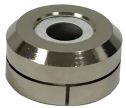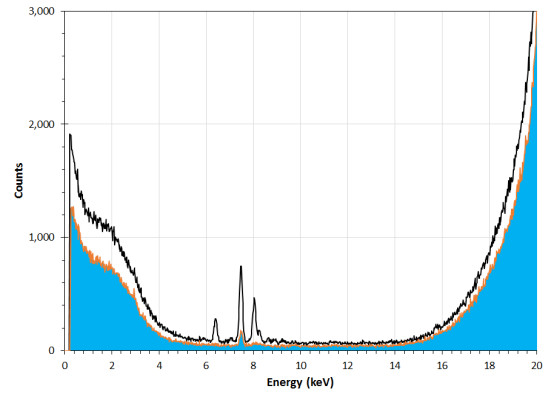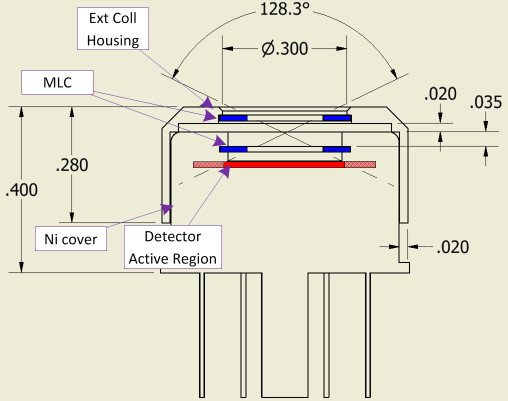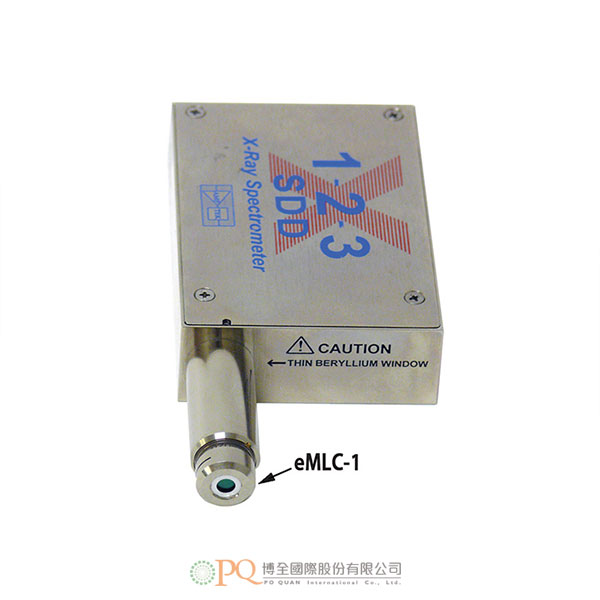
-
 AARONIA AG
AARONIA AG
-
 ADASH
ADASH
-
 Amptek
Amptek
- з”Ёж–ј XRF/EDS зҡ„ FastSDD X е°„з·ҡжҺўжё¬еҷЁ
- Mini-X2 Xе°„з·ҡз®Ў
- PLEIADES XRA-700 жҺўжё¬еҷЁйҷЈеҲ—
- Si-PIN X е°„з·ҡеҒөжё¬еҷЁ
- CdTe X е°„з·ҡе’ҢдјҪйҰ¬е°„з·ҡжҺўжё¬еҷЁ
- Amptek жҺўжё¬еҷЁзҡ„зңҹз©әжҮүз”Ё
- OEM XRF и§ЈеҶіж–№жЎҲ
- XRF/EDS йҷ„件
- ж•ёдҪҚи„ҲиЎқиҷ•зҗҶеҷЁ
- еӨҡйҖҡйҒ“еҲҶжһҗе„Җ пјҲMCAпјү
- е®Ңж•ҙзҡ„ XRF еҜҰй©—еҘ—件
-
 AOiP
AOiP
-
 AstroNova
AstroNova
-
 Automatic Research
Automatic Research
-
 AWSensors
AWSensors
-
 BASI
BASI
-
 BRS
BRS
-
 CALMET
CALMET
-
 CHECKLINE
CHECKLINE
-
 Cmc
Cmc
-
 CTRL
CTRL
-
 DANATRONICS
DANATRONICS
-
 DV Power
DV Power
-
 EA Technology
EA Technology
-
 ECH
ECH
-
 EL-CELL
EL-CELL
-
 Electrothermal
Electrothermal
-
 Elsys
Elsys
-
 ELVEFLOW
ELVEFLOW
-
 Enapter
Enapter
-
 ENERGY SUPPORT
ENERGY SUPPORT
-
 Enervac
Enervac
-
 FASTEC
FASTEC
-
 Gaskatel
Gaskatel
-
 GE
GE
-
 GIUSSANI
GIUSSANI
-
 Globecore
Globecore
-
 GMW
GMW
-
 GREENLIGHT
GREENLIGHT
-
 GRZ
GRZ
-
 HIGH SENSE SOLUTIONSHTW
HIGH SENSE SOLUTIONSHTW
-
 HTW
HTW
-
 HUBER
HUBER
-
 HVPD
HVPD
-
 Ida
Ida
-
 Instytut Fotonowy
Instytut Fotonowy
-
 IVIUM
IVIUM
-
 Jacomex
Jacomex
-
 Jenway
Jenway
-
 JGG
JGG
-
 KEHUA TECH
KEHUA TECH
-
 Labdex
Labdex
-
 Labnics
Labnics
-
 LIQUID
LIQUID
-
 METERTEST
METERTEST
-
 Metrel
Metrel
- зҙ…еӨ–з·ҡзҶұеҪұеғҸжҮүз”Ёе·Ҙе…·
- е®үиҰҸеҲҶжһҗе„Җ
- е–®/еӨҡеҠҹиғҪйӣ»ж°Је®үиҰҸжё¬и©ҰеҷЁ|еӨӘйҷҪе…үйӣ»иЁӯеӮҷжё¬и©ҰеҷЁзі»еҲ—
- жҺҘең°йӣ»йҳ»жё¬и©ҰеҷЁ / и®ҠеЈ“еҷЁжё¬и©ҰеҷЁ/ е°ҺйҖҡжё¬и©ҰеҷЁ / й«ҳеЈ“зө•з·Јжё¬и©ҰеҷЁ
- еҸҜж”ңејҸйӣ»ж°ЈиЁӯеӮҷ(PAT)|ж©ҹжў°|й–Ӣй—ңиЈқзҪ®е®үиҰҸжё¬и©ҰеҷЁзі»еҲ—
- йӣ»еҠӣе“ҒиіӘеҲҶжһҗе„Җзі»еҲ—
- еҜҰй©—е®Ө|еӯёж Ўйӣ»ж°Је®үе…Ёе“ҒиіӘжӘўжё¬жҮүз”Ёеҹ№иЁ“иЁӯеӮҷзі»еҲ—
-
 Microrad
Microrad
-
 micrux
micrux
-
 ndb
ndb
-
 Neware
Neware
-
 Norecs
Norecs
-
 Novocontrol
Novocontrol
-
 OKOndt Group
OKOndt Group
-
 OZM
OZM
- з©©е®ҡжҖ§е’Ңзӣёе®№жҖ§жё¬и©Ұ
- йқҲж•ҸеәҰе’ҢзҲҶзӮёжҖ§и©Ұй©—
- зҲҶзӮёзү©жҖ§иғҪжё¬и©Ұ
- зҒ«зӮ®жҺЁйҖІеҠ‘еҪҲйҒ“жё¬и©Ұ
- зҒ«з®ӯжҺЁйҖІеҠ‘еҪҲйҒ“жё¬и©Ұ
- йӣ»зӮёиЈқзҪ®жё¬и©Ұ
- еҜҰй©—е®ӨйҳІзҲҶжҡЁе®үе…Ёе„ІеӯҳиЈқзҪ®
- йӢ°йӣ»жұ зҲҶзӮёжҖ§жӘўжё¬е„Җ
- зІүеЎөйӣІзҲҶзӮёжҖ§жё¬и©Ұ
- жҝғеәҰжҘөйҷҗзҡ„зҮғзҮ’жё¬и©Ұе„Җ
- жҷӮй–“еЈ“еҠӣжё¬и©Ұе„Җ
- й«ҳеЈ“йҮң
- ж¶Ій«”иҮӘзҮғжә«еәҰжё¬и©Ұе„Җ
- зІүеЎөеұӨй»һзҒ«жә«еәҰжё¬и©Ұе„Җ
- жңҖдҪҺй»һзҒ«жә«еәҰжё¬и©Ұе„Җ
- зӣёе°ҚиҮӘзҮғжә«еәҰжё¬и©Ұе„Җ
- 75В°C дёӢзҡ„зҶұз©©е®ҡжҖ§жё¬и©Ұ
- иҮӘзҷјжҖ§зҶұзү©иіӘжё¬и©Ұе„Җ
- зІүеЎөе’Ңж°Јй«”зҲҶзӮёе®Ө
- еҜҰй©—е®ӨзҙҡзҲҶиҪҹе®Ө
-
 Pine Research
Pine Research
-
 Redoxme
Redoxme
-
 SATIR
SATIR
- дәәй«”й«”жә«жӘўжё¬пҪңе·ҘжҘӯжҮүз”Ёзҙ…еӨ–з·ҡзҶұеғҸе„Җзі»еҲ—
- и»Ҡз”Ёе®үе…ЁиЈқзҪ®|иј”иҰ–|еӨңиҰ–жҮүз”Ёзҙ…еӨ–з·ҡзҶұеғҸе„Җзі»еҲ—
- дҝқе…Ё|зӣЈиҰ–|йҳІзҰҰжҮүз”Ёзҙ…еӨ–з·ҡзҶұеғҸе„Җзі»еҲ—
- йҶ«зҷӮжҮүз”Ёзҙ…еӨ–з·ҡзҶұеғҸе„Җзі»еҲ—
- ж•ҙеҗҲеһӢеӨҡйҮҚжҮүз”Ёзҙ…еӨ–з·ҡзҶұеғҸе„Җж ёеҝғзі»еҲ—
- з ”зҷј|жҗңж•‘|е®үйҳІ|жҺўеӢҳ|жӘўжё¬жҮүз”Ёз„Ўдәәж©ҹзҶұеғҸе„Җзі»зөұзі»еҲ—
-
 SDT
SDT
-
 Serstech
Serstech
-
 VacCoat
VacCoat
-
 Zurich
Zurich
- AARONIA AG
- ADASH
-
Amptek
- з”Ёж–ј XRF/EDS зҡ„ FastSDD X е°„з·ҡжҺўжё¬еҷЁ
- Mini-X2 Xе°„з·ҡз®Ў
- PLEIADES XRA-700 жҺўжё¬еҷЁйҷЈеҲ—
- Si-PIN X е°„з·ҡеҒөжё¬еҷЁ
- CdTe X е°„з·ҡе’ҢдјҪйҰ¬е°„з·ҡжҺўжё¬еҷЁ
- Amptek жҺўжё¬еҷЁзҡ„зңҹз©әжҮүз”Ё
- OEM XRF и§ЈеҶіж–№жЎҲ
- XRF/EDS йҷ„件
- ж•ёдҪҚи„ҲиЎқиҷ•зҗҶеҷЁ
- еӨҡйҖҡйҒ“еҲҶжһҗе„Җ пјҲMCAпјү
- е®Ңж•ҙзҡ„ XRF еҜҰй©—еҘ—件
- AOiP
- AstroNova
- Automatic Research
- AWSensors
- BASI
- BRS
- CALMET
- CHECKLINE
- Cmc
- CTRL
- DANATRONICS
- DV Power
- EA Technology
- ECH
- EL-CELL
- Electrothermal
- Elsys
- ELVEFLOW
- Enapter
- ENERGY SUPPORT
- Enervac
- FASTEC
- Gaskatel
- GE
- GIUSSANI
- Globecore
- GMW
- GREENLIGHT
- GRZ
- HIGH SENSE SOLUTIONSHTW
- HTW
- HUBER
- HVPD
- Ida
- Instytut Fotonowy
- IVIUM
- Jacomex
- Jenway
- JGG
- KEHUA TECH
- Labdex
- Labnics
- LIQUID
- METERTEST
-
Metrel
- зҙ…еӨ–з·ҡзҶұеҪұеғҸжҮүз”Ёе·Ҙе…·
- е®үиҰҸеҲҶжһҗе„Җ
- е–®/еӨҡеҠҹиғҪйӣ»ж°Је®үиҰҸжё¬и©ҰеҷЁ|еӨӘйҷҪе…үйӣ»иЁӯеӮҷжё¬и©ҰеҷЁзі»еҲ—
- жҺҘең°йӣ»йҳ»жё¬и©ҰеҷЁ / и®ҠеЈ“еҷЁжё¬и©ҰеҷЁ/ е°ҺйҖҡжё¬и©ҰеҷЁ / й«ҳеЈ“зө•з·Јжё¬и©ҰеҷЁ
- еҸҜж”ңејҸйӣ»ж°ЈиЁӯеӮҷ(PAT)|ж©ҹжў°|й–Ӣй—ңиЈқзҪ®е®үиҰҸжё¬и©ҰеҷЁзі»еҲ—
- йӣ»еҠӣе“ҒиіӘеҲҶжһҗе„Җзі»еҲ—
- еҜҰй©—е®Ө|еӯёж Ўйӣ»ж°Је®үе…Ёе“ҒиіӘжӘўжё¬жҮүз”Ёеҹ№иЁ“иЁӯеӮҷзі»еҲ—
- Microrad
- micrux
- ndb
- Neware
- Norecs
- Novocontrol
- OKOndt Group
-
OZM
- з©©е®ҡжҖ§е’Ңзӣёе®№жҖ§жё¬и©Ұ
- йқҲж•ҸеәҰе’ҢзҲҶзӮёжҖ§и©Ұй©—
- зҲҶзӮёзү©жҖ§иғҪжё¬и©Ұ
- зҒ«зӮ®жҺЁйҖІеҠ‘еҪҲйҒ“жё¬и©Ұ
- зҒ«з®ӯжҺЁйҖІеҠ‘еҪҲйҒ“жё¬и©Ұ
- йӣ»зӮёиЈқзҪ®жё¬и©Ұ
- еҜҰй©—е®ӨйҳІзҲҶжҡЁе®үе…Ёе„ІеӯҳиЈқзҪ®
- йӢ°йӣ»жұ зҲҶзӮёжҖ§жӘўжё¬е„Җ
- зІүеЎөйӣІзҲҶзӮёжҖ§жё¬и©Ұ
- жҝғеәҰжҘөйҷҗзҡ„зҮғзҮ’жё¬и©Ұе„Җ
- жҷӮй–“еЈ“еҠӣжё¬и©Ұе„Җ
- й«ҳеЈ“йҮң
- ж¶Ій«”иҮӘзҮғжә«еәҰжё¬и©Ұе„Җ
- зІүеЎөеұӨй»һзҒ«жә«еәҰжё¬и©Ұе„Җ
- жңҖдҪҺй»һзҒ«жә«еәҰжё¬и©Ұе„Җ
- зӣёе°ҚиҮӘзҮғжә«еәҰжё¬и©Ұе„Җ
- 75В°C дёӢзҡ„зҶұз©©е®ҡжҖ§жё¬и©Ұ
- иҮӘзҷјжҖ§зҶұзү©иіӘжё¬и©Ұе„Җ
- зІүеЎөе’Ңж°Јй«”зҲҶзӮёе®Ө
- еҜҰй©—е®ӨзҙҡзҲҶиҪҹе®Ө
- Pine Research
- Redoxme
-
SATIR
- дәәй«”й«”жә«жӘўжё¬пҪңе·ҘжҘӯжҮүз”Ёзҙ…еӨ–з·ҡзҶұеғҸе„Җзі»еҲ—
- и»Ҡз”Ёе®үе…ЁиЈқзҪ®|иј”иҰ–|еӨңиҰ–жҮүз”Ёзҙ…еӨ–з·ҡзҶұеғҸе„Җзі»еҲ—
- дҝқе…Ё|зӣЈиҰ–|йҳІзҰҰжҮүз”Ёзҙ…еӨ–з·ҡзҶұеғҸе„Җзі»еҲ—
- йҶ«зҷӮжҮүз”Ёзҙ…еӨ–з·ҡзҶұеғҸе„Җзі»еҲ—
- ж•ҙеҗҲеһӢеӨҡйҮҚжҮүз”Ёзҙ…еӨ–з·ҡзҶұеғҸе„Җж ёеҝғзі»еҲ—
- з ”зҷј|жҗңж•‘|е®үйҳІ|жҺўеӢҳ|жӘўжё¬жҮүз”Ёз„Ўдәәж©ҹзҶұеғҸе„Җзі»зөұзі»еҲ—
- SDT
- Serstech
- VacCoat
- Zurich
SDD жҺўжё¬еҷЁзҡ„ eMLC-1 еӨ–йғЁеҮҶзӣҙеҷЁ
eMLC-1 External Collimator for SDD Detectors еһӢиҷҹпјҡeMLC-1Amptek зҡ„ eMLC-1 еӨ–йғЁеҮҶзӣҙеҷЁжҳҜдёҖеҖӢйҷ„件пјҢеҸҜз”Ёж–јжёӣе°‘ X е°„з·ҡеҫһе»Ји§’йҖІе…Ҙ Amptek SDD е’Ң Fast SDD® жҺўжё¬еҷЁзҡ„йҖҡйҮҸпјҢеҫһиҖҢж”№е–„иғҢжҷҜдёҰжёӣе°‘е…үиӯңе№Іж“ҫгҖӮ еӨ–йғЁеҮҶзӣҙеҷЁзҡ„ж•ҲжһңеңЁеҫҲеӨ§зЁӢеәҰдёҠеҸ–жұәж–је„ҖеҷЁзҡ„е№ҫдҪ•еҪўзӢҖ; иЁұеӨҡе®ўжҲ¶йғҪжңғзӮәд»–еҖ‘зҡ„жҮүз”ЁиЁӯиЁҲиҮӘе·ұзҡ„еҮҶзӣҙеҷЁгҖӮ йҖҷжҳҜдёҖеҖӢйҖҡз”Ёе·Ҙе…·пјҢеҸҜеңЁиЁұеӨҡжҮүз”ЁдёӯдҪҝз”ЁпјҢд№ҹжҳҜе®ҡиЈҪиЁӯиЁҲзҡ„еҹәзӨҺгҖӮ
-
з”Ёж–ј Amptek SDD е’Ң Fast SDD® жҺўжё¬еҷЁзҡ„еӨ–йғЁеҮҶзӣҙеҷЁ !!
Amptek зҡ„ eMLC-1 еӨ–йғЁеҮҶзӣҙеҷЁжҳҜдёҖеҖӢйҷ„件пјҢеҸҜз”Ёж–јжёӣе°‘ X е°„з·ҡеҫһе»Ји§’йҖІе…Ҙ Amptek SDD е’Ң Fast SDD® жҺўжё¬еҷЁзҡ„йҖҡйҮҸпјҢеҫһиҖҢж”№е–„иғҢжҷҜдёҰжёӣе°‘е…үиӯңе№Іж“ҫгҖӮ еӨ–йғЁеҮҶзӣҙеҷЁзҡ„ж•ҲжһңеңЁеҫҲеӨ§зЁӢеәҰдёҠеҸ–жұәж–је„ҖеҷЁзҡ„е№ҫдҪ•еҪўзӢҖ; иЁұеӨҡе®ўжҲ¶йғҪжңғзӮәд»–еҖ‘зҡ„жҮүз”ЁиЁӯиЁҲиҮӘе·ұзҡ„еҮҶзӣҙеҷЁгҖӮ йҖҷжҳҜдёҖеҖӢйҖҡз”Ёе·Ҙе…·пјҢеҸҜеңЁиЁұеӨҡжҮүз”ЁдёӯдҪҝз”ЁпјҢд№ҹжҳҜе®ҡиЈҪиЁӯиЁҲзҡ„еҹәзӨҺгҖӮ
Amptek зҡ„ SDD е’Ң Fast SDD® жҺўжё¬еҷЁеҢ…жӢ¬дёҖеҖӢе…§йғЁеӨҡеұӨеҮҶзӣҙеҷЁпјҲMLCпјүпјҢе®ғеҸҜд»ҘйҳІжӯў X е°„з·ҡеҲ°йҒ”йӣ»иҚ·ж”¶йӣҶдёҚзҗҶжғізҡ„жҺўжё¬еҷЁжңүж•Ҳй«”з©Қзҡ„йӮҠз·ЈгҖӮ eMLC-1 дҪҝз”ЁзӣёеҗҢзҡ„еӨҡеұӨеҮҶзӣҙеҷЁпјҢе®ғжҺЎз”Ёй»ғйҠ…еӨ–ж®јпјҢдёҰе®үиЈқеңЁеӨ–йғЁгҖӮ еӨҡеұӨеҮҶзӣҙеҷЁеҸҜд»Ҙжңүж•Ҳең°йҳ»жӯў X е°„з·ҡпјҢе…¶ж ёеҝғзӮәйҺўпјҢдёҰжҺЎз”ЁйҖҗжјёйҷҚдҪҺ Z зҡ„жқҗж–ҷеұӨдҫҶйҳ»ж“Ӣе…¶зү№жңүзҡ„ X е°„з·ҡ ; еӨ–еұӨжҳҜйӢҒгҖӮ

жҮүз”ЁдёӢйқўзҡ„е…үиӯңйЎҜзӨәдәҶеӨ–йғЁеҮҶзӣҙеҷЁзҡ„жҮүз”ЁгҖӮ йҖҷдәӣе…үиӯңжҳҜдҪҝз”Ё Amptek еҜҰй©—дәәе“ЎеҘ—件е’Ңй…ҚеӮҷ W е’Ң Al з®Ўжҝҫе…үзүҮзҡ„ Ag йҷҪжҘө X е°„з·ҡз®Ўеҫһй«ҳеҜҶеәҰиҒҡд№ҷзғҜжЁЈе“Ғжё¬еҫ—пјҢи©ІжЁЈе“ҒжҮүдёҚеҗ«йҮ‘еұ¬гҖӮ й»‘иүІи»Ңи·Ўз·ҡжҳҜеңЁжҺўжё¬еҷЁдёҠжІ’жңүеӨ–йғЁеҮҶзӣҙеҷЁзҡ„жғ…жіҒдёӢжҺЎйӣҶжүҖеҫ—гҖӮ еҸҜиҰӢзҡ„еі°еҢ…жӢ¬FeгҖҒNiе’Ң CuпјҲйҖҷиЈЎзҡ„ Ni дҫҶиҮӘж–јжҺўжё¬еҷЁи“Ӣзҡ„йӮҠз·ЈпјҢе…¶е®ғжқҗж–ҷдҫҶиҮӘеӨҫе…·пјүгҖӮ ж©ҷиүІи»Ңи·Ўз·ҡжҳҜеңЁдҪҝз”Ё eMLC-1 зҡ„жғ…жіҒдёӢжҺЎйӣҶжүҖеҫ—гҖӮ йҺіеј·еәҰйҷҚдҪҺдәҶ 7 еҖҚпјҢиҖҢе…¶е®ғз·ҡеүҮе®Ңе…Ёж¶ҲеӨұгҖӮ зёҪиЁҲж•ёзҺҮз”ұж–јз«Ӣй«”и§’жёӣе°ҸиҖҢйҷҚдҪҺдәҶ 20%гҖӮ

еҰӮйңҖдәҶи§ЈжӣҙеӨҡдҝЎжҒҜпјҢи«Ӣз«ӢеҚіиҒҜ繫жҲ‘еҖ‘пјҒ -
еӨҡеұӨеҮҶзӣҙеҷЁпјҲMLCпјүпјҡ еҹәеә•йҮ‘еұ¬зӮә 100 μm зҡ„йҺўпјҲWпјүпјҢ第дёҖеұӨзӮә 35 μm зҡ„йү»пјҲCrпјүпјҢ第дәҢеұӨзӮә 15 μm зҡ„йҲҰпјҲTiпјүпјҢжңҖеҫҢдёҖеұӨзӮә 75 μm зҡ„йӢҒпјҲAlпјүгҖӮ
еҮҶзӣҙеҷЁеӨ–ж®јпјҡ еҹәеә•йҮ‘еұ¬зӮә0.020иӢұеҜёй»ғйҠ…пјҢиЎЁйқўйҚҚйҺігҖӮ и«ӢжіЁж„ҸпјҢйҖҷдҪҚж–јжҺўжё¬еҷЁ0.010иӢұеҜёйҺіи“Ӣзҡ„й ӮйғЁгҖӮ
й–ӢеҸЈйқўз©Қпјҡ 17 mm²е№ҫдҪ•еҸғж•ё
дёӢең–йЎҜзӨәдәҶж©ҹжў°иЁӯиЁҲгҖӮ и«ӢжіЁж„ҸпјҢеӨ–ж®јйҖҡйҒҺеӨ–з·Јзҡ„жўҜзҙҡиҲҮйҲ№иҰ–зӘ—дҝқжҢҒеңЁ0.020иӢұеҜёзҡ„и·қйӣўгҖӮ
-
External Collimator for Amptek SDD and Fast SDD® Detectors
Amptek’s eMLC-1 External Collimator is an accessory which can be used to reduce the flux of X-rays entering Amptek’s SDD and Fast SDD® detectors from wide angles, improving background and reducing spectral interferences. The optimum external collimator depends strongly on the geometry of a particular instrument; many customers will design their own collimator for their application. This is a general purpose tool which helps in many applications and is a basis for customization.
Amptek’s SDD and Fast SDD® detectors include an internal multilayer collimator (MLC), which prevents X-rays from reaching the edge of the detector’s active volume, where charge collection is poor. The eMLC-1 utilizes the same multilayer collimator, mounted externally, in a brass housing. The multilayer collimator stops X-rays efficiently, with a core of tungsten, and layers of progressively lower-Z materials to stop its characteristic X-rays; the outer layer is aluminum.

ApplicationThe spectra below illustrate the use of the external collimator. These were obtained from a sample of high density polyethylene, which should not have metals present, measured using Amptek’s Experimenter’s Kit with an Ag-anode X-ray tube equipped with W and Al tube filters. The black trace was taken without an external collimator on the detector. Visible peaks include Fe, Ni, and Cu (there is Ni from the edge of the detector cover, with the other materials in the fixture). The orange trace was taken with the eMLC-1. The Ni intensity is reduced by a factor of 7 while the other lines are removed entirely. The total count rate is 20% lower due to the reduced solid angle.

Contact us for more information today! -
Multilayer Collimator (MLC): The base metal is 100 µm of tungsten (W), the first layer is 35 µm of chromium (Cr), the second layer is 15 µm of titanium (Ti), and the last layer is 75 µm of aluminum (Al).
Collimator housing: The base metal is 0.020” brass, with a nickel finish. Note that this is on top of the 0.010” nickel cover of the detector.
Open area: 17 mm²Geometry
The drawing below sketches the mechanical design. Note that the housing is kept 0.020” from the Be window by the small step at the outer edge.







